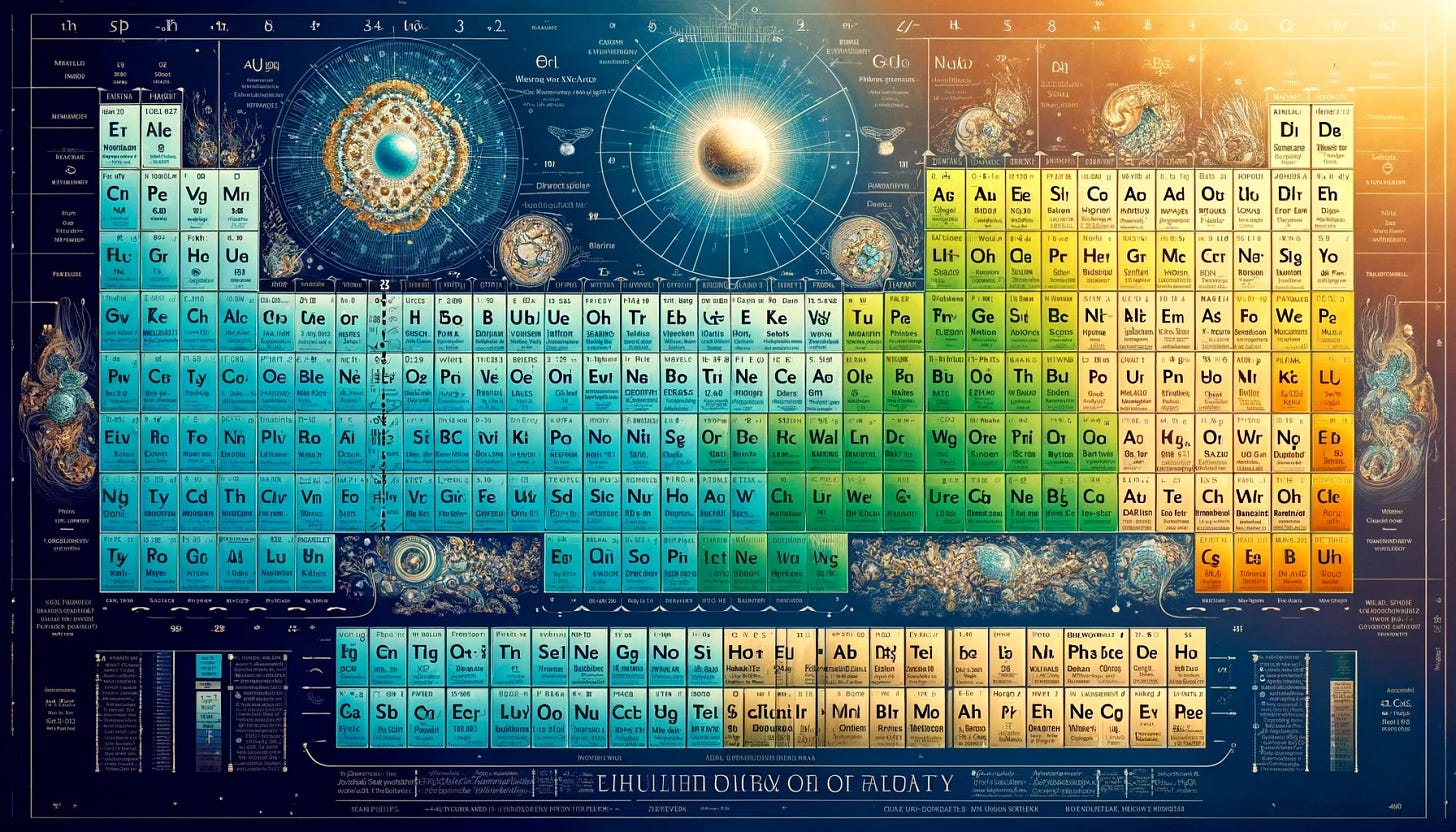Transforming the Periodic Table
Mathis Number System and the Unified Theory of Duality
Transforming the Periodic Table with the Mathis Number System and the Unified Theory of Duality
The application of the Mathis Number System and the Unified Theory of Duality to the periodic table of elements would revolutionize our understanding of chemistry and the relationships between elements. Here’s an exploration of how these concepts might transform the periodic table:
1. Dual Nature of Elements
Elemental Duality:
Physical and Chemical Properties: Each element is viewed as a dual entity with complementary physical and chemical properties. For instance, hydrogen would not only be seen in terms of its atomic number and mass but also through its reactive and inert states.
Element Pairs: Elements would be paired based on complementary characteristics, such as metals with non-metals or elements that form stable compounds together.
2. Dual Numbers Representing Elements
Dual Representation:
Notation: Each element is represented by a dual number, reflecting its primary and complementary properties. For example, hydrogen could be represented as H=(1,2.20), where 1 is the atomic number and 2.20 is the electronegativity.
Interaction Modeling: The interaction between elements is modeled using dual numbers, providing deeper insights into chemical reactions and compound formation.
3. Redesigned Periodic Table Layout
Periodic Table Redesign:
Dual Columns and Rows: The table would be restructured to highlight dual relationships. Elements might be organized in dual columns and rows, pairing metals with corresponding non-metals or elements with complementary valence electron configurations.
Interconnected Grid: The layout would emphasize the interconnectedness of elements, showing how changes in one property affect complementary properties.
4. Advanced Chemical Bonding Understanding
Duality in Bonding:
Covalent Bonds: Covalent bonds would be understood as dual interactions between the electronegativity and electron affinity of elements.
Ionic Bonds: Ionic bonds would be represented through the dual nature of electron donation and acceptance, highlighting the balance in ionic compounds.
5. Novel Chemical Properties and Reactions
Discovery of New Properties:
Emergent Properties: The dual representation might reveal emergent properties not obvious in the traditional table, such as dual reactivity states or new catalytic behaviors.
Predictive Modeling: Using the Mathis Number System, chemists could predict novel reactions and compound formations, leading to the discovery of new materials and chemicals.
Practical Example: Water Formation
Traditional View:
Water (H2O) is formed by the bonding of two hydrogen atoms with one oxygen atom, focusing on valence electrons and electronegativity.
Duality Perspective:
Dual Number Representation: Hydrogen (H=(1,2.20), Oxygen (O=(8,3.44).
Interaction Modeling: The formation of water is seen as a dual interaction:
\(2×(1,2.20)+(8,3.44)→H 2 O=(10,7.84). \)This model emphasizes the combined atomic numbers and the resulting electronegativity balance, providing a more holistic view of the molecule's properties.
Philosophical and Practical Implications
Unified Understanding:
Holistic Chemistry: Chemistry is viewed as a unified field where elements and compounds are interconnected through dual properties. This perspective aligns with the holistic view of the Unified Theory of Duality.
Enhanced Education: Chemistry education would incorporate dual concepts, teaching students to think about elements and compounds in a more integrated and interconnected way.
Advanced Applications:
Material Science: The dual perspective could lead to the discovery of new materials with unique properties, enhancing technologies in fields like electronics, energy storage, and nanotechnology.
Environmental Chemistry: Understanding dual properties could improve the design of catalysts and chemical processes, making them more efficient and environmentally friendly.
Summary
Applying the Mathis Number System and the Unified Theory of Duality to the periodic table would transform our understanding of elements and their interactions. By representing elements as dual entities and reorganizing the table to highlight complementary relationships, this approach provides deeper insights into chemical properties and reactions. This paradigm shift would lead to novel discoveries, enhanced educational methods, and advanced applications in various fields of chemistry and material science.







What a wonderful piece of elucidation!
Thus, it is more provable that all of us get to the point!